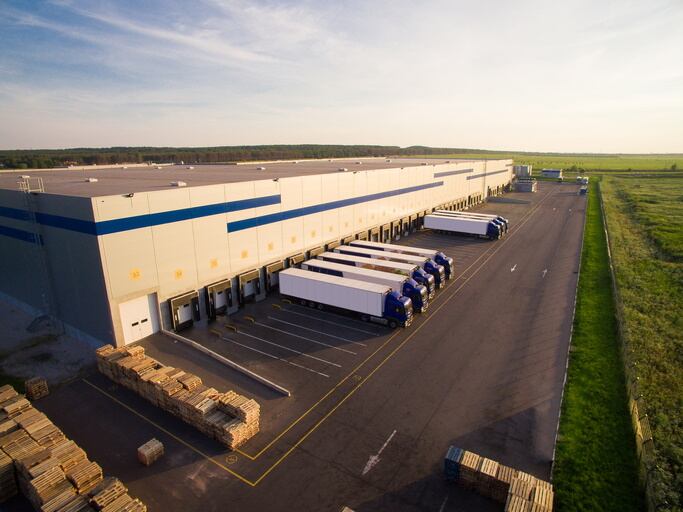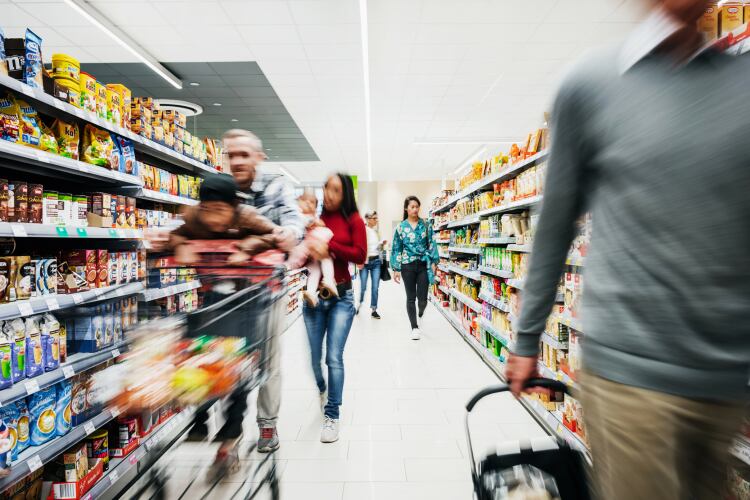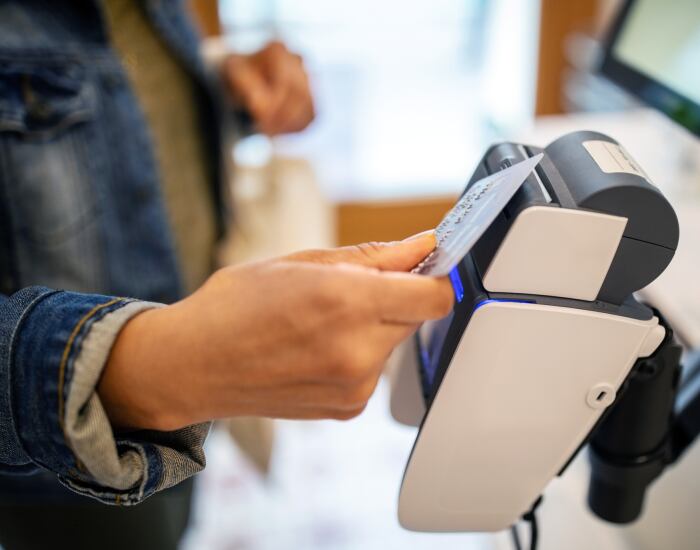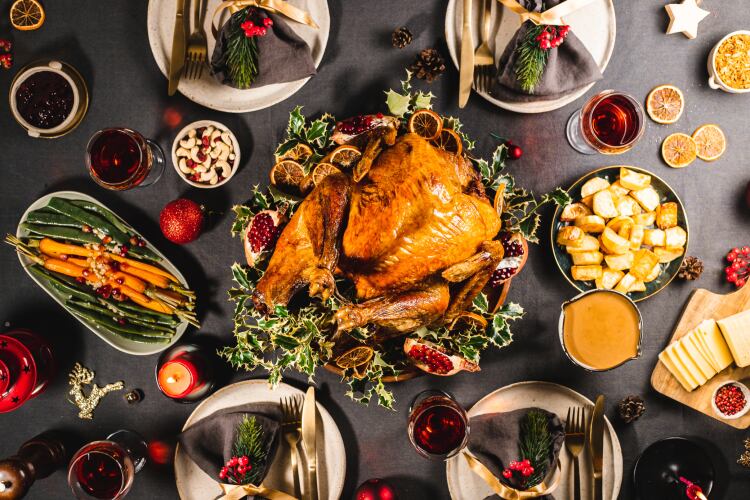The UK food supply chain is facing ‘dire operational challenges’ that are ‘only likely to worsen as we edge towards Christmas and the New Year’. That’s the grim assessment from Mike Parr, Director of logistics and supply chain solutions company Perishable Movements Ltd (PML).
Detailing the current situation, Parr observed worldwide air cargo operations are ‘struggling’ with freight backlogs. Onward forwarding of cargo is in ‘turmoil' resulting in 'food supplies left on the airside apron at Heathrow’. Meanwhile a ‘lack of trained staff’ following furlough scheme redundancies has hit the ‘seamless transfer’ of products.
Driver shortages remain a ‘critical issue’ despite the various government initiatives put in place to combat the problem, Parr added. “Even when new drivers are recruited, there is a clear lag between them being a newly qualified driver, and the employer feeling sufficiently confident that they are ready and capable of taking on long-distance journeys.”
It isn’t just a question of recruitment, the logistics expert continued. “For those drivers already in the system, morale is low, and many are choosing to seek alternative, less stressful employment,” he said, explaining that HGV drivers have traditionally been treated ‘very badly’ in the UK. Underlining the issue, Parr pointed to the fact that suicide rates among HGV drivers are 20% higher than the national average.

Parr is not optimistic that the situation will be rectified in time to get deliveries moving smoothly enough to meet the seasonal bump in demand. “This country is in for a very bumpy ride in the foreseeable future. Don’t believe the politicians who refer to a 24-point plan or strategize that research is underway to address the problems. The supply chain industry needs properly planned solutions, not knee-jerk reactions to every crisis,” he insisted.
The supply chain expert is not alone in voicing concern over the availability of food this festive season.
Commenting on Christmas stock levels, Mark Lynch, Partner at corporate finance house Oghma Partners, said the labour shortage that is impacting the whole UK food sector is likely to be seen on shelf.
“With well-known labour shortages impacting the food sector, as with other parts of the economy, there are inevitably going to be issues impacting Christmas,” he warned.
During the height of COVID-19, when production levels came under pressure, food manufacturers were likely to respond by focusing on their most profitable product lines. Lynch expects to see more of the same in the run-up to Christmas. “What we have seen so far is that the focus for manufacturers has been on the larger and most profitable customers - not necessarily the same thing - and a focus on most profitable lines. As a result, the range of products on offer this Christmas in retail is likely to be smaller and there could be shortages in more niche product areas.”
He also anticipates that when products sell out, they are unlikely to be replenished with fresh supplies. “Food factories have a lesser ability to ramp up production for last minute demand so we are likely to see more cases of Christmas products being out of stock ‘when it’s gone it’s gone’ – our advice would be to get the brandy butter in early.”

Rising food prices add to pressure
For consumers, the supply situation is compounded by spiking food prices. The latest figures from Kantar Worldpanel reveal food price inflation reached 2.1% in October. The Consumer Price Index – which includes other consumables such as clothing and transportation – was up 3.8% in the 12 months to October.
This upward price pressure looks set to mount with the Bank of England predicting inflation could hit 5% in 2022.
Food price inflation is expected to contribute to rising costs as commodity prices continue to increase. In its annual Agri Commodity Markets Outlook report, Rabobank said that adverse weather will pose one of the ‘biggest challenges’ to global food production. The food and agribusiness bank also flagged trading bottlenecks, higher farm input costs, expensive shipping and increased demand, all of which will result in price increases across key food staples.
The prices of grains and oilseeds like wheat and corn, food staples coffee and sugar, and key inputs such as palm oil, will all remain high next year, the bank predicted.
“There will be no return to pre-pandemic prices in 2022. While COVID-19-related disruption will subside, inflationary pressures and adverse weather will hit producers, making them unable to significantly expand output,” Carlos Mera, head of agri commodities at Rabobank, said.
While that might leave some of us wondering what impact this will have on our grocery bills next year, Mera emphasized that food price inflation can have much more significant consequences, resulting in instability and social unrest. “Governments around the world will be watching prices closely. Inflation in food staples like wheat have previously been credited to contributing to societal unrest, including the Arab Spring. Higher farm input costs, expensive shipping and strong demand make for a toxic recipe. The knock-on effect of higher food prices on beleaguered societies in underdeveloped countries shouldn’t be dismissed in 2022.”
In the UK, at least, the latest shopper confidence figures from research group IGD suggest that – for the time being – consumers are happy to keep calm and carry on spending.
UK shopper confidence shows festive cheer
The November 2021 Shopper Confidence Index from IGD ShopperVista has risen for the first time since April 2021, as shoppers prepare for Christmas. With 61% of shoppers looking forward to getting back to a ‘traditional’ Christmas following the dampened 2020 festivities and 67% thinking that Christmas is a time to splash out on food and groceries, shopper confidence increased to -9 vs -11 in October.
“It’s refreshing to see a slightly brighter outlook as we head into the festive period. Assuming that no more restrictions are put in place as a result of the Omicron variant, we expect confidence to be elevated throughout the month,” observed Rhian Thomas, Head of Insight at ShopperVista.

But despite this apparent Christmas boost, the Index demonstrated shoppers are ‘increasingly concerned’ about food price inflation. Expectations around price increases have reached ‘an all-time high’, with 85% expecting food and grocery prices to increase in the year ahead and 29% expecting them to get ‘much more expensive’.
“It’s unfortunately not a longer-term story of Christmas cheer,” Thomas observed. “Despite the decision by the Bank of England not to raise interest rates at the moment, the media has focused heavily on the rising cost of living. We expect shoppers to increase their focus on saving money at the start of 2022, to make up for any overspending at Christmas and prepare for the energy price cap which could see household energy prices jump by more than 40%.
“Shoppers remain highly sensitive to price rises and news of any shortages, which in turn impacts confidence. ‘Savvy shopping’ will become increasingly prevalent again in the new year and value will be top of mind.”

